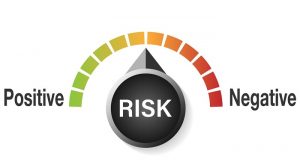
Credit: Full Force.
Ever worked with a colleague who was impossibly frustrating? You just didn’t see eye-to-eye with them on anything. Perhaps they thought the failure of a project was your fault, but it was clearly theirs. Why couldn’t they see that?
It could just be that your personality types are fire and ice. For example, you may be excited by new ideas, constantly looking for alternative approaches to a problem, while your colleague keeps telling you that these are out of scope, not practical or realistic. They maybe a logical, critical thinker always looking for proof points in team decisions.
If you found yourself nodding in firm affirmation of the former or the latter, you may be pleased, reassured, maybe a bit surprised to know – you are a specific “team-role type”, according to Randall S Peterson, Professor of Organisational Behaviour and Academic Director, Leadership Institute at London Business School.
Based on 30 years of research into team dynamics and the well-known Big 5 personality traits, Professor Peterson has developed a proprietary Tipping Point (Team Interaction Profile) wheel of personality fortune.
This is aimed at helping companies and employees to get a better understanding of their individual attributes and how these will impact team behaviours and ultimately performance.
“If the task is ill-defined, you may want an Agilator working with you as they thrive in fast-changing environments where they can help the team to be adaptable and roll with the flow”
Realists – as named by Peterson – are the individuals in a team who tend to be data-driven and always want ‘proof of concept’. That can bore the Imagineers, who see endless possibilities and get excited about change. Cue fireworks.
Peterson says: “Imagineers tend to add creative spark to teams and at their best can help teams innovate, find breakthrough solutions and new insight. But if there are too many Imagineers in a group, the team may experience higher levels of conflict and lower cohesion as individuals are likely to see a different set of connections and interdependencies as important and pull the team in different directions.
On the other hand, he says, “teams with a mix of Imagineers and Realists have the highest levels of team creativity and performance”.
He adds: “All effective teams need to do two main things: get the tasks in the group done while also looking after the relationships in the group to ensure that the group is collaborating well. Teams also need to balance the need for structure, order, and rules to ensure everyone is working towards the same goals in a coordinated fashion against the need to motivate individuals by letting them work in the way that works best for them as individuals.
“By understanding your underlying personality preference, you will get a sense of your overall team role preference, what other team roles and personality types you work best with, worst with and if you’re a leader, what type of team members you could collaborate with to motivate individuals in your team that need different inputs than that you can adequately deliver.”
Build your team carefully
Peterson’s specialist area is cognitive diversity in teams. Cognitive diversity can be defined as individuals within a team thinking differently, having different perspectives on how to deliver a task and also processing information differently.
Cognitive diversity is less frequently discussed than age, gender, sexual orientation, and race diversity, but Peterson believes it really should be. In fact, he says, it actually matters as much as a predictor of team outcomes – success or failure.
“The received wisdom is that, the greater the diversity in the team, the more effective it will be,” says Peterson. “But actually, the correlation between diversity and performance is zero. If the team is more diverse than the average, the research shows there is a bigger chance that it will outperform less diverse rivals. But that it is also likely to under-perform as it also increases the risk for conflict.”
“Diversity has to be managed well to get a consistent positive return – what I call the Return on Inclusion (ROI). That’s key. That’s when the magic happens. If it isn’t, that’s when conflict arises and if that isn’t managed well, a downward spiral begins.” In a previous article for Think at London Business School, he wrote about teams caught up in a downward spiral that damages intragroup trust and leads to poor performance.
“This downward spiral can be triggered, for example, by the Rationalist, who is task-focused, locking horns with the Team Builder, who is more focused on building good relations in the team. If the mix of these types in a team is unbalanced, strong interventions will be needed to manage the inevitable tension. Otherwise, the team will not be able to succeed, as negative feedback at team level will lead to an ugly and unhelpful blame game, destroying trust and the ability to move forward.”
“Diversity has to be managed well to get a consistent positive return – what I call the Return on Inclusion (ROI). That’s when the magic happens.”
Peterson says that while most human accomplishments stem from group efforts, the focus in organisations still tends to be individual “person-job” fit as opposed to “person-team” role fit. Yet in multiple studies of hundreds of MBA students and consulting teams working together for months at a time, Peterson is able to consistently demonstrate that team composition and fit has significant impact on individual performance and team success.
So, what does the optimal team look like?
Peterson says that there is strong evidence that the best leader for effective team performance has a high mix of Boss-Being and Standard-Bearer attributes: dominant personality types who like being the boss but are also dependable, reliable, industrious and good at setting plans and frameworks.
The best kind of team, particularly in an unpredictable and difficult operating environment, which we increasingly find ourselves, also has at least one Team Builder: affable, flexible types who are empathetic to the challenges of their colleagues and will help to resolve interpersonal conflicts.
“The fuzzier the problem, the more getting people to talk and cooperate with each other is the strategy. Team Builders may be surprised to know that their contribution is actually critical.”
After that, it depends on the team objective and the components required for achieving it, says Peterson. “Is the task innovation? Then, you need an Imagineer. Is it technical? Then, you need a Realist. How interdependent is this team? Do they need to work really closely together, or can we assign each person a job, which can then be slotted into the bigger picture afterwards?
“If the task is ill-defined, you may want an Agilator working with you as they thrive in unstructured and fast-changing environments where they can help the team to be adaptable and roll with the flow. But, like all personality types, they have their own risks to team performance. An effective leader must just understand what they are to be able to mitigate those risks for the benefit of the whole team.”
Peterson offers this warning to team leaders. “The complex interplay of individual member personality differences is hugely significant in predicting team outcomes, and as more progress is made on demographic diversity, this will naturally drive more cognitive tensions within teams because of the different experiences and perspectives being brought together.
“A skills audit should be a first step when putting a team together for a project or workflow. Then the next thing would be to understand the personality types that will organically flow as a result. The greater the diversity, the greater the potential for conflict, because of the proclivity to see the world in potentially very different ways.
“A certain balance is needed in the team for best effect and that must be managed as a joint effort with team leader and HR. After that, it’s up to the team leader to manage the conflict so that it remains constructive and the team can stay focused.”
Credit: London Business School
What is your impression about this story?
Kindly like and share.





















